Audi reveals new RS6 Avant with 592bhp and 306kmph top end
It’s been 25 years since Audi presented its original RS-badged model, the RS2, and the new RS6 Avant is the latest interpretation of the brand’s‘fast estate’ offering
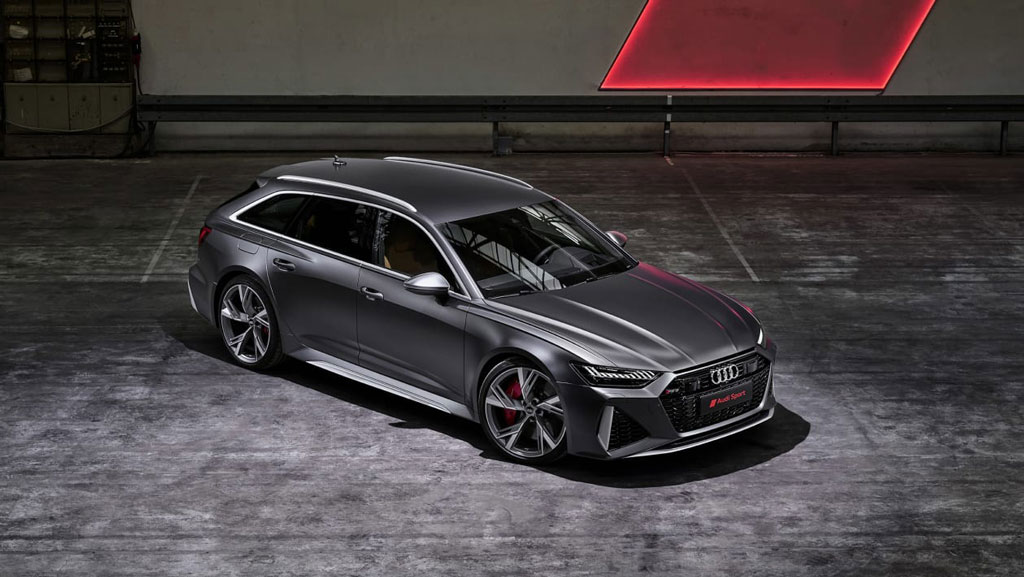
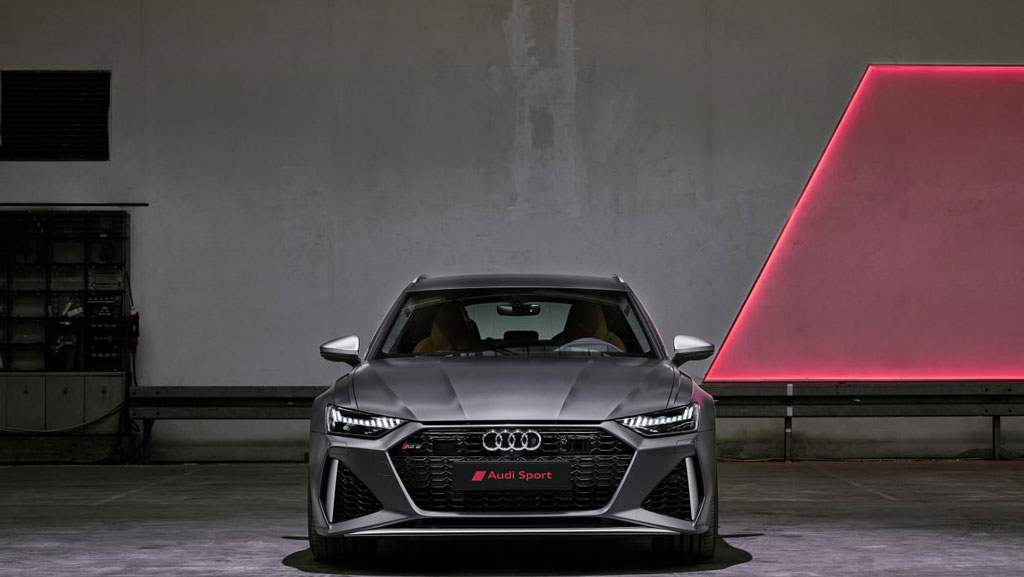
Audi has revealed the upgraded RS6, which the brand says is all-new and crucially, more powerful. At a glance, it looks sleeker and more purposeful than the more rounded-looking outgoing model. Powered by a revised 4-litre twin-turbocharged V8, there’s a thumping 800Nm of torque sent through an eight-speed quattro transmission, which will result in a sub four-second 0-100kmph time, and, depending on the option packs you select, a potential 306kmph top speed.
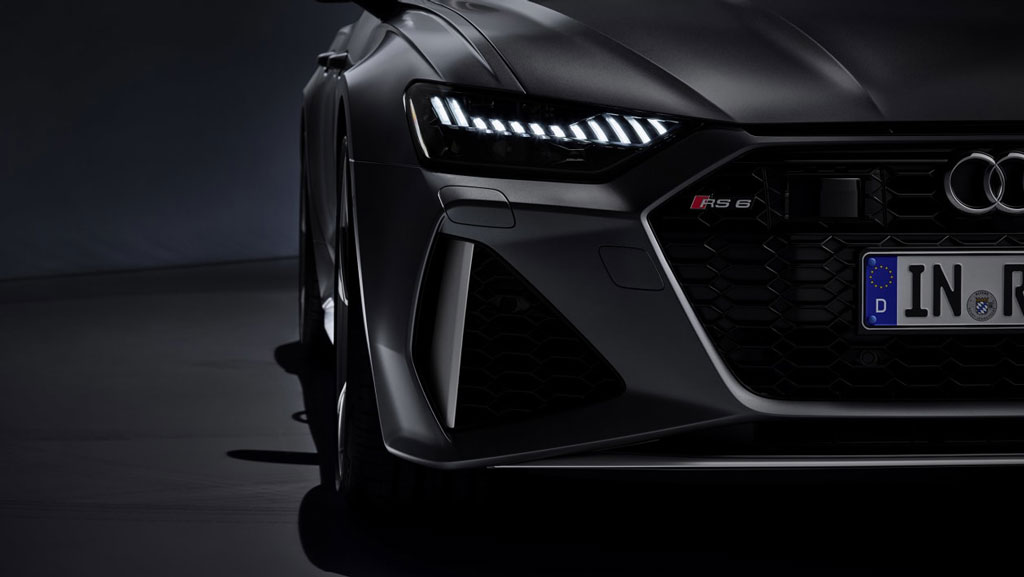
Design
Aside from its front doors, the roof and the tailgate, every exterior panel from the single-frame front grille to the rear diffuser is new to the RS6. Its headlights are from the new A7 (RS matrix LED technology headlights are also available as an option) and live within a new RS6-specific bumper that has a more aggressive splitter attached beneath it and wider, more aggressive cooing apertures within. Audi’s trademark new grille does without the crossbeam, whilst the sills are unique, so too the rear roof spoiler, rear bumper and the aforementioned rear diffuser. The RS6 is also 80mm wider and the first model to premiere Audi Sport’s new design language.
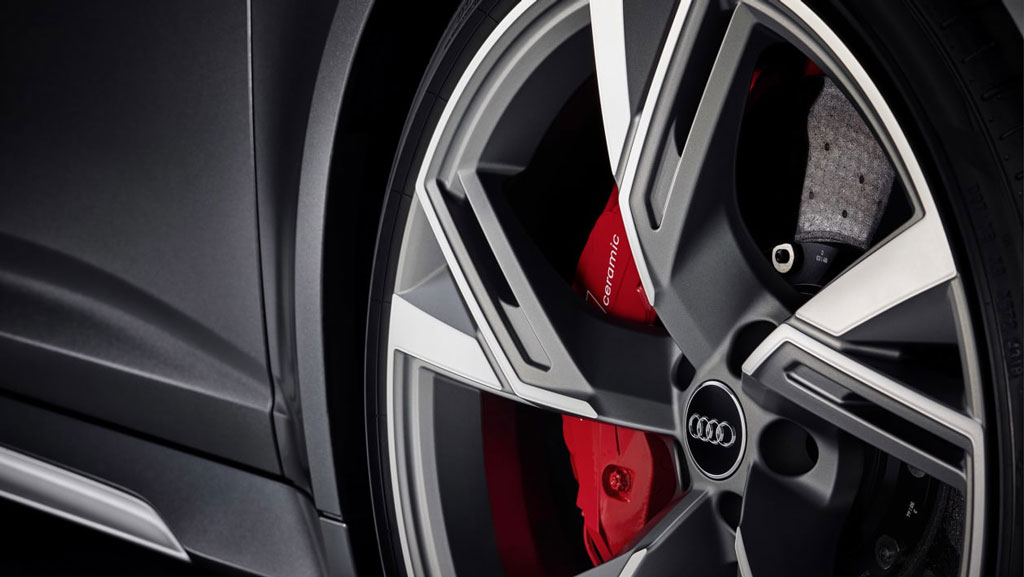
A 21-inch ten-spoke star design alloy wheel is standard, with a 22-inch RS-specific five V-spoke wheel available as an option. There are also 13 colours to choose from, including RS-only Nardo Grey and Sebring Black, and three finishes for the exterior body trim: matt aluminium, gloss black or carbonfibre.
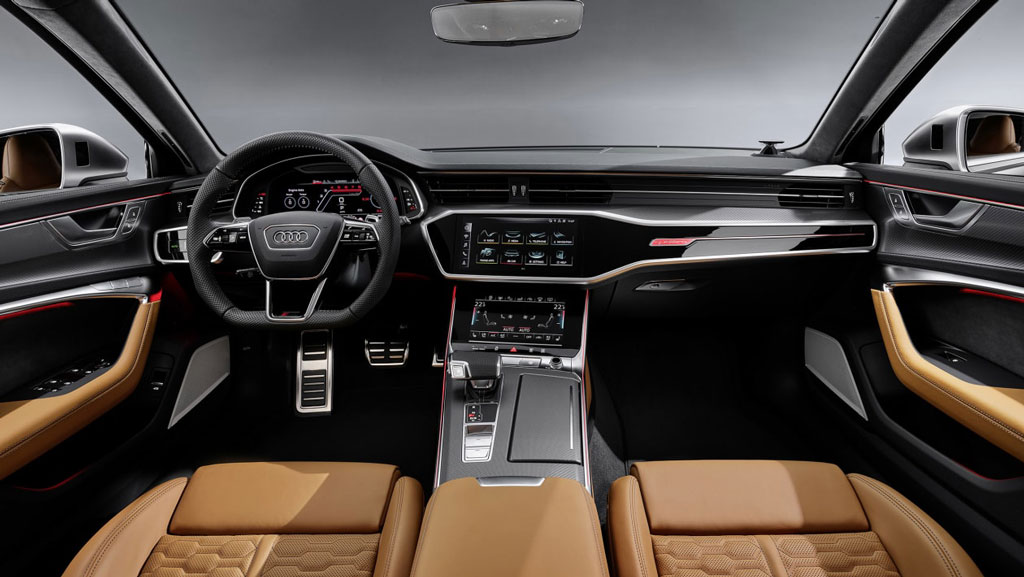
Interiors
As keeping with the new A6, there are touchscreens aplenty including the latest MMI control centre that is also home to an RS Monitor that allows the driver to view the temperature of the powertrain’s vital components, G-generated under acceleration, tyre pressures and temps.
Naturally there’s an Audi virtual cockpit, which can also display torque and power output, engine oil temperature, boost pressure, lap times and acceleration figures. There are also shift light and (optional) head-up displays.
A flat-bottomed steering wheel is standard with a pair of gearshift paddles attached to the back, and there is also an RS button that allows you to switch between your two preferred pre-set driving mode configurations.
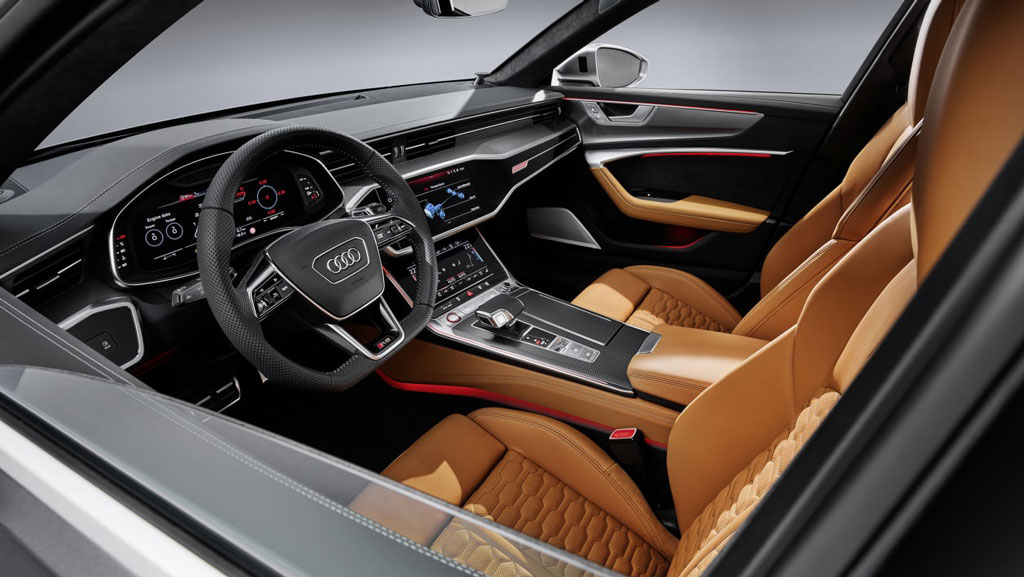
Nappa leather and Alcantara cover the sports seats, with full leather an option. There are also two RS design packages available that trim the steering wheel, gearlever gaiter and knee pads with red or grey details. Carbon, natural wood and aluminium inlays are offered.
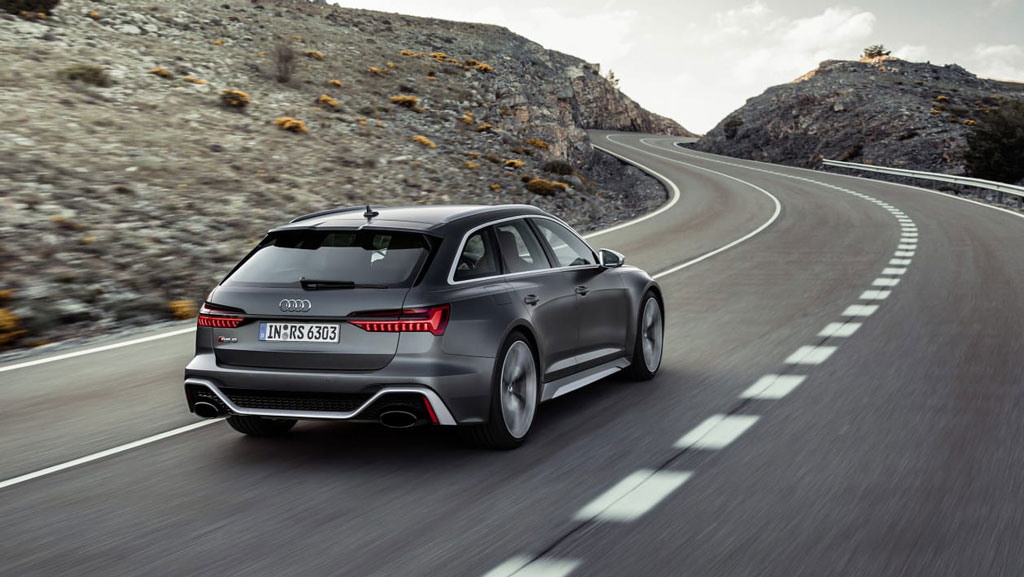
Chassis and brakes
Underpinning the new RS6 Avant is a five-link suspension front and rear, with linkages and subframes constructed from aluminium. The front and rear tracks have been increased greatly over those of the standard A6, hence the wider body to accommodate the width. RS adaptive air suspension is standard, with damping that’s been tuned specifically for the RS. A new air spring module and 50 per cent higher spring rate allow for the RS6’s potential 306kmph maximum speed depending on the dynamic package you order.
Sitting 20mm lower than an A6 on standard suspension, the RS6 lowers automatically by an additional 10mm above 120kmph, with a 20mm lift mode also available at low speeds. The rear suspension has also been repackaged to allow the fitment of a tow bar.
Alternatively, you can have Audi Sport’s RS Sport Suspension Plus with dynamic ride control, which has steel springs instead of the air chambers, and the new three-stage adjustable dampers are installed and connected by diagonal oil lines with a central valve. At high speed, the valve regulates the oil flow to the outside front damper to reduce pitch and roll and increase support.
Dynamic steering is standard with dynamic all-wheel steering available as an option, which retains the same system for the front but also incorporates rear-axle steering for the first time. This system, like others, shortens the chassis at low speeds by turning the rear wheels in the opposite direction to the front wheels by up to five degrees, and applies up to two degrees of lock to the rear wheels in the same direction as the front wheels at high speed to virtually extend the wheelbase.
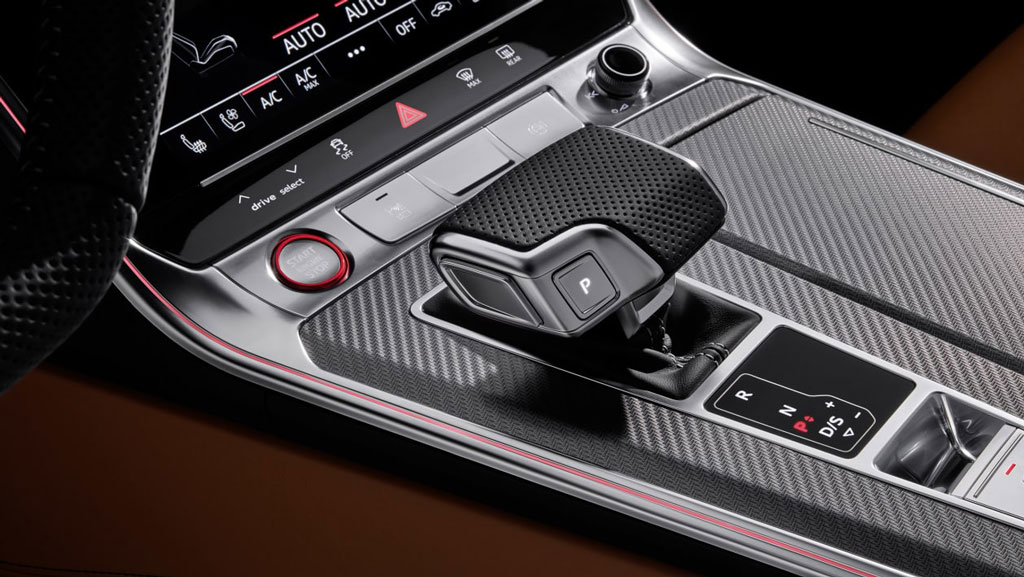
Six driver modes will be offered via the Drive Select function: comfort, auto, dynamic, efficiency and the two configurable RS modes – RS1 and RS2 – which can be accessed directly via the RS button on the steering wheel.
The functions affected by the driving modes include the engine and gearbox responses, power steering, suspension, dynamic all-wheel steering, the quattro sport differential, exhaust and engine note and the air conditioning. If you want the ESP to relax its grip you’ll need to use the RS2 mode.
Twenty-one-inch wheels are standard with the 275/35 tyres, with 22-inch wheels and a 285/30 tyres available as an option. Steel brakes with 420mm front and 370mm rear discs are standard, with 440mm front and 370mm rear carbon-ceramics optional, complete with ten-piston calipers. The ceramic stoppers weigh 34kg less than the standard steel items.
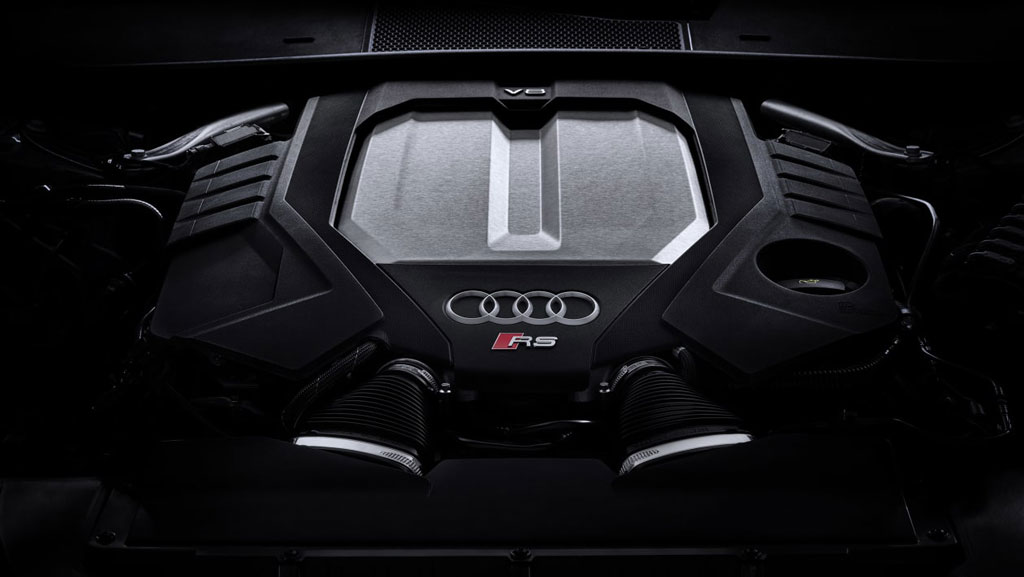
Engine and transmission
Fresh from a WLTP makeover, the 4-litre TFSI twin-turbocharged V8 develops 592bhp and 800Nm of torque from 2100rpm through to 4500rpm – figures that put this new entry-level RS6 just shy of the outgoing range-topper, the 597bhp RS6 Performance.
But while you will have to wait for Porsche’s Panamera Turbo S E-Hybrid powertrain to find its way to Audi (the first hybrid Audi Sport model will be an RS4 plug-in hybrid), this new RS6 does feature a 48V electrical system. This allows it to recover up to 12kW of energy under light deceleration that’s stored in its own lithium-ion battery. Depending on the driver mode selected, this can allow the car to maintain its speed if the driver lifts off between 55 and 160kmph and coast for up to 40 seconds with the engine switched off. There’s a belt alternator starter to manage the restart process. As with the previous RS6, cylinder on demand is also standard, with cylinders 2, 3, 5 and 8 shutting down at low speeds.
As clever as all this sounds, it doesn’t, you’ll be pleased to hear, have a detrimental effect on the RS6’s performance, with 100kmph arriving in 3.6sec and top speed pegged at 250kmph in standard trim, or 280kmph if you go for the dynamic package and 306mph if you splash out on the dynamic package plus.
There’s an eight-speed Tiptronic gearbox that splits drive via Audi’s quattro four-wheel-drive system and a mechanical centre diff split 40:60 front to rear, although up to 70 per cent can be sent to the front axle and 85 to the rear if slip is detected.
Torque vectoring is standard, nipping the brakes on the wheels with the least load as you go through a bend. You’ll need to specify the optional dynamic package if you want the quattro sport differential, which manages the torque distribution across the rear axle.
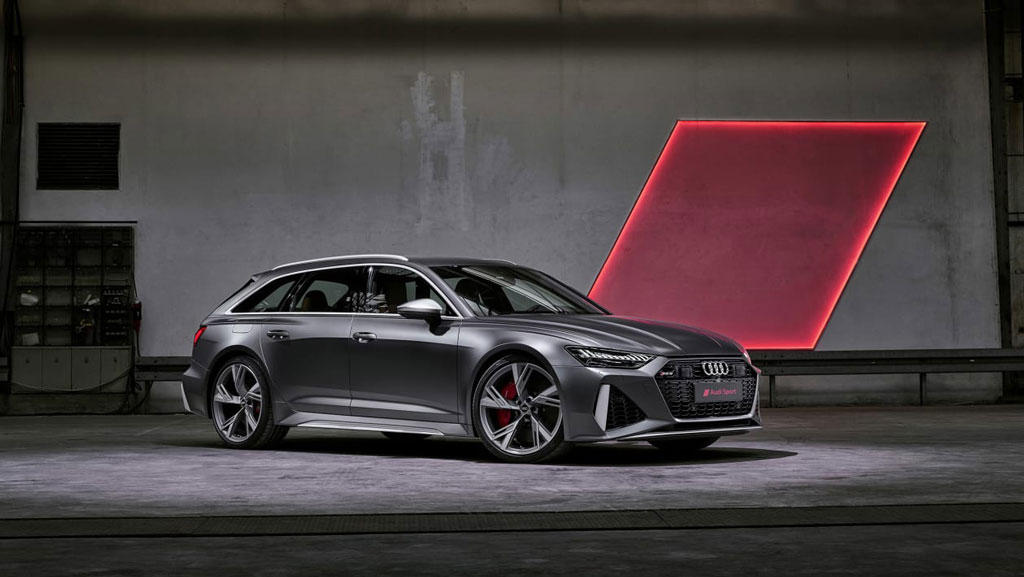
Audi is the only manufacturer that brought a go-faste0r wagon to our shores, and hence it has no direct competitors here. Internationally, it goes up against the E63 S and the BMW M5 Touring. At the moment there is no official word about when the new RS6 Avant will land on Indian roads, but when it does, it may have an estimated sticker of Rs 1.5 crore. Now, considering that Audi had launched the RS6 Avant in India in 2015, an update is definitely due. Our fingers are crossed!


